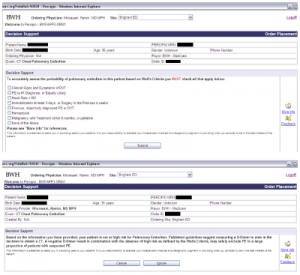Figures 1: (Top) Clinical decision support tool that provides automated calculation of the Wells score. (Bottom) Analysis of the calculated Wells score and its predetermined associated risk for pulmonary embolism.
Figures 1: (Top) Clinical decision support tool that provides automated calculation of the Wells score. (Bottom) Analysis of the calculated Wells score and its predetermined associated risk for pulmonary embolism.
By Joseph Harrington
|
on August 15, 2017
|
0 Comment



No Responses to “Figures 1: (Top) Clinical decision support tool that provides automated calculation of the Wells score. (Bottom) Analysis of the calculated Wells score and its predetermined associated risk for pulmonary embolism.”